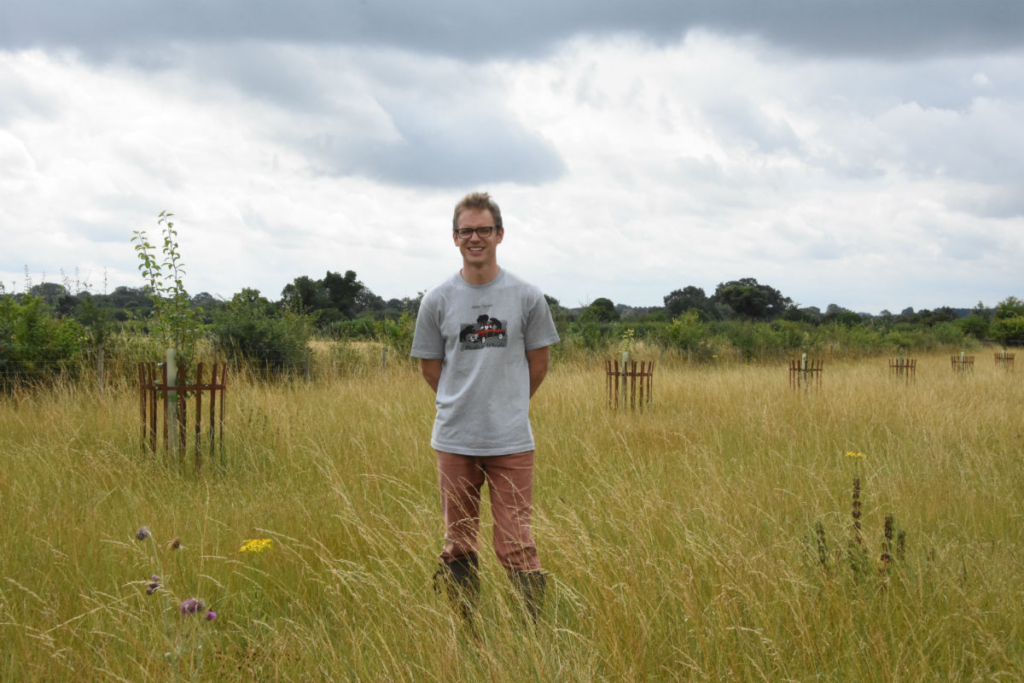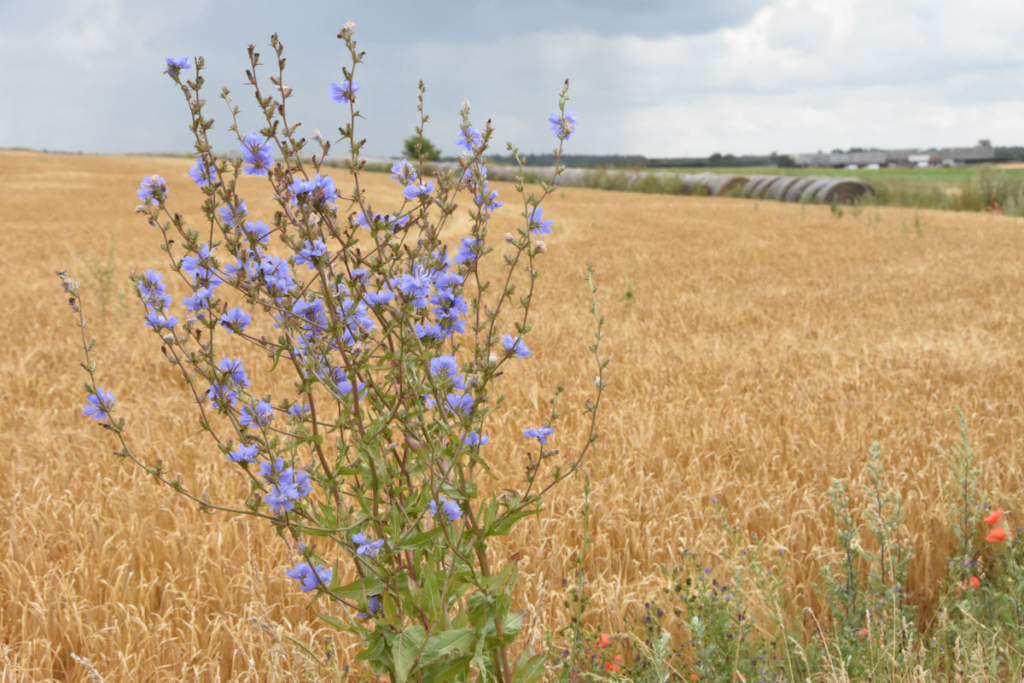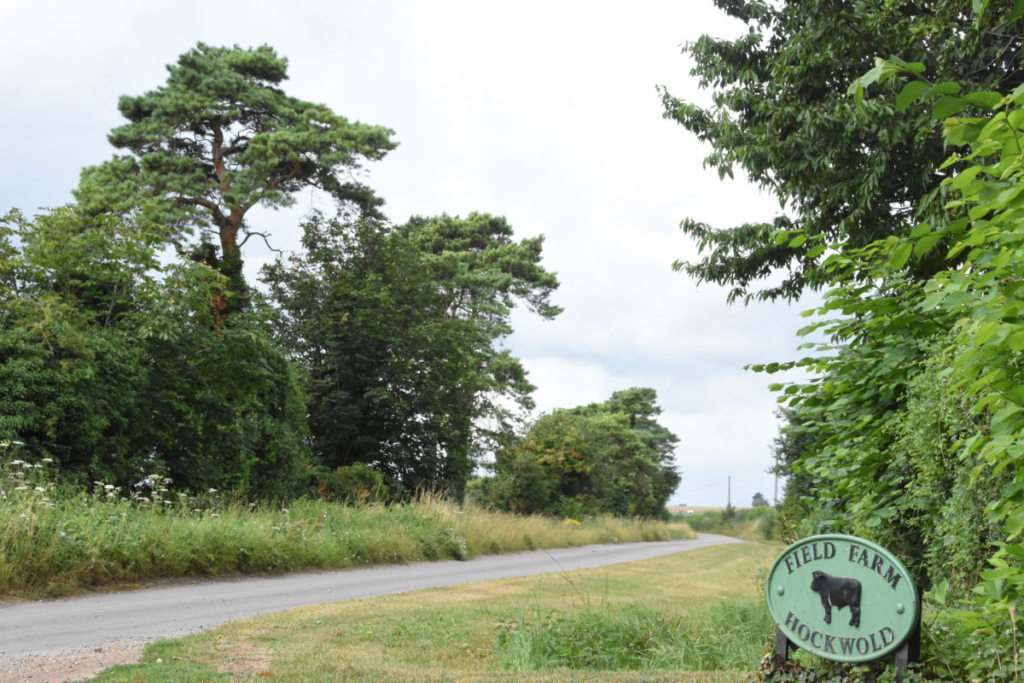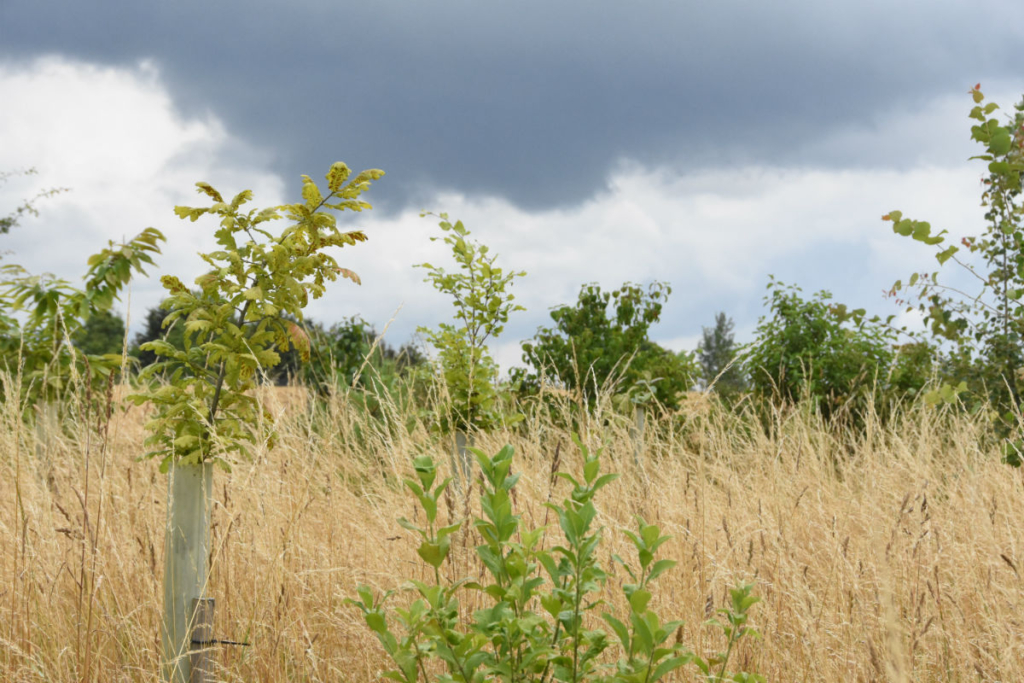“Now is our time” – George Atkin and Field Farm
Will going organic be the farm’s future?

George Atkin is short of time, a deadline is due. At present, he works full time for Natural England, but his future will be on the 700 acre family farm which is currently run by his mother and the farm manger. Atkin is acutely aware of the challenges farmers in the UK and in England in particular) are facing: whatever ELMS, the government’s Environmental Land Management Scheme will eventually look like, it will not make up for the shortfall from the Basic Payment Scheme (BPS) that farmers could rely on before Brexit. Combined with the vagaries of the climate crisis which farmers are exposed to in a more immediate and direct way than most, one thing is clear: farming practices will have to change. The question is how.
Farm history mirrors the challenges of its time
Atkin’s mother and her father before her had to come to grips with challenges and hard choices, too. The family has been farming the land northwest of Thetford for six generations. Because the land is relatively flat and level, some hedges had been taken out during the war to turn the fields into a landing strip for fighter planes. At the time Atkin’s grandfather took on the farm, chemical fertilisers were just becoming widely available and food production was of paramount importance. It made sense for his grandfather “to focus on a single goal: the highest yield possible”. It was a highly productive system, but it took its toll: when George’s mother, Pat Atkin, took on the farm almost half a century later, she introduced more diversity and had some of the larger fields broken up into 30 acre units. Today, winter and spring barley (mainly grown for seed) as well as some of the winter wheat are the most important crops. Then there are lucerne, sugar and fodder beats. Some land is rented out for onion production, but the contract with a potato grower has ended and will not be renewed. The 200 acres of permanent pasture are grazed by a herd of 100 Aberdeen Angus. As we make our way to see the cattle, George Atkin points out the cultivated field margin paid for Higher Level Stewardship Scheme: by taking out the nutrients, the wild flowers typical for the Brecks were able to re-established themselves.
Thinking differently
George Atkin was born in 1990. He had little interest in farming until he left school and studied agriculture in Cirencester. “I wanted to learn how to grow crops”, he says. After his exams he worked for three years as an agronomist for a large company. “Quite a lot of what you do is going around farms selling chemicals”, he says. He did not enjoy this aspect of the job, and he also began to have serious doubts about the use of agrichemicals. There was no single event that changed his perspective, he says, rather it was the look back at history: how his grandfather came to rely on chemical fertiliser and the consequences that has for us today. “We have a biodiversity crisis, and a climate crisis”, Atkin says, “Now is our time and we understand things differently”.

George Atkin is still working full time for Natural England, but since he and his wife live in one of the cottages on the farm, he is getting more involved – not with the day to day running of the operation but with long term planning. A strip of land next to the drive leading up to the farm has become his ‘sand box’ – in the literal sense, too: it is grade 2 agricultural land with sandy soils over chalk.
Five years ago, he planted a small woodland area with ten different species and the help of the Woodland Trust. The hedge bordering to the south was planted four years ago and having previously worked as an orchard manager, he planted fruit trees in the adjacent area: choosing local heritage apple varieties, Norfolk Royal, Norfolk Dumpling and Norfolk Beefing among them. It’s a thought through agroforestry project: all varieties were planted on M25 strong rootstock, the trees will grow tall and develop large crowns, providing cider, cooking and eating apples for home consumption as well as shaded grassland for grazing animals which, in turn, will help to improve soil quality, even though at present, the 20 rare breed Norfolk Horns grazing on the other side of the drive are still more of a hobby. Eventually they may become more integral to the farm, managing cover crops on the arable land.
Planning ahead

Within the next five years, Atkin will return to the farm as a farmworker, possibly part-time to begin with. Though his mother will continue to run the farm for the foreseeable future, he will have more of a say. Eventually, he will take over, but no date has been set. Still, his goals for the farm are very clear: he wants to produce good, nutritious food while increasing biodiversity and achieving measurable benefits for the environment. He would like to switch to direct drilling.
Where the hedges once used to be, he’d plant rows of trees serving as windbreakers for the alleys with crops in between. He’d like to introduce new crops, possibly grow beans for human consumption for Hodmedod, the Norfolk pulse and grain company, that is helping farmers to reintroducing heritage varieties into their rotations.
Atkin sees reducing the cattle numbers further eliminating the need for supplementary feed as key. Changing their role to ‘landscape managers’ with a side product of beef. His short to medium term goal for the grassland is to farm without the use of fertilisers and supplement feeding, instead the animals should graze a diverse mix of grasses, forbs and herbs. And he is looking at mob-grazing.
Organic as an option
His mother has already agreed to his plan for converting a small area of grassland to organic once he returns to the farm. But while he studied agriculture in Cirencester, there was little talk about organic farming practices. Atkin joined the ORC to learn more about organic farming, but converting to organic of course would have to make financial sense, too. In an ideal world he’d want an ORC agronomist to come to the farm to do an assessment. “It would be great to have someone to bounce ideas off”, says Atkin.
With the loss of the BPS he’d also be looking at putting more unproductive land such as hard to cultivate corners and field margins into higher stewardship schemes and if there was an option to get paid for sequestering carbon that would of course be an added bonus.
For George Atkin, his farming goals are clear: Food, climate and biodiversity on an equal footing, calorific output of the farm must be maintained or increased whilst making space for nature and being a carbon positive business. So much is made of not reducing food production, it’s often given as the reason space can’t be made for nature. But more focus needs to be place on what we are growing. There are efficiencies to be made if farmers, suppliers and consumers can change together. Organic certification is not the main driver for what he wants do. For ‘millennial farmers’ like Atkin, mitigating the climate crisis is the challenge of his generation, and without the knowledge and research as to what practices from the “farming toolbox” work best on their farms, there will be no future for food.

Written by Marianne Landzettel, with photographs by Martin Kunz


